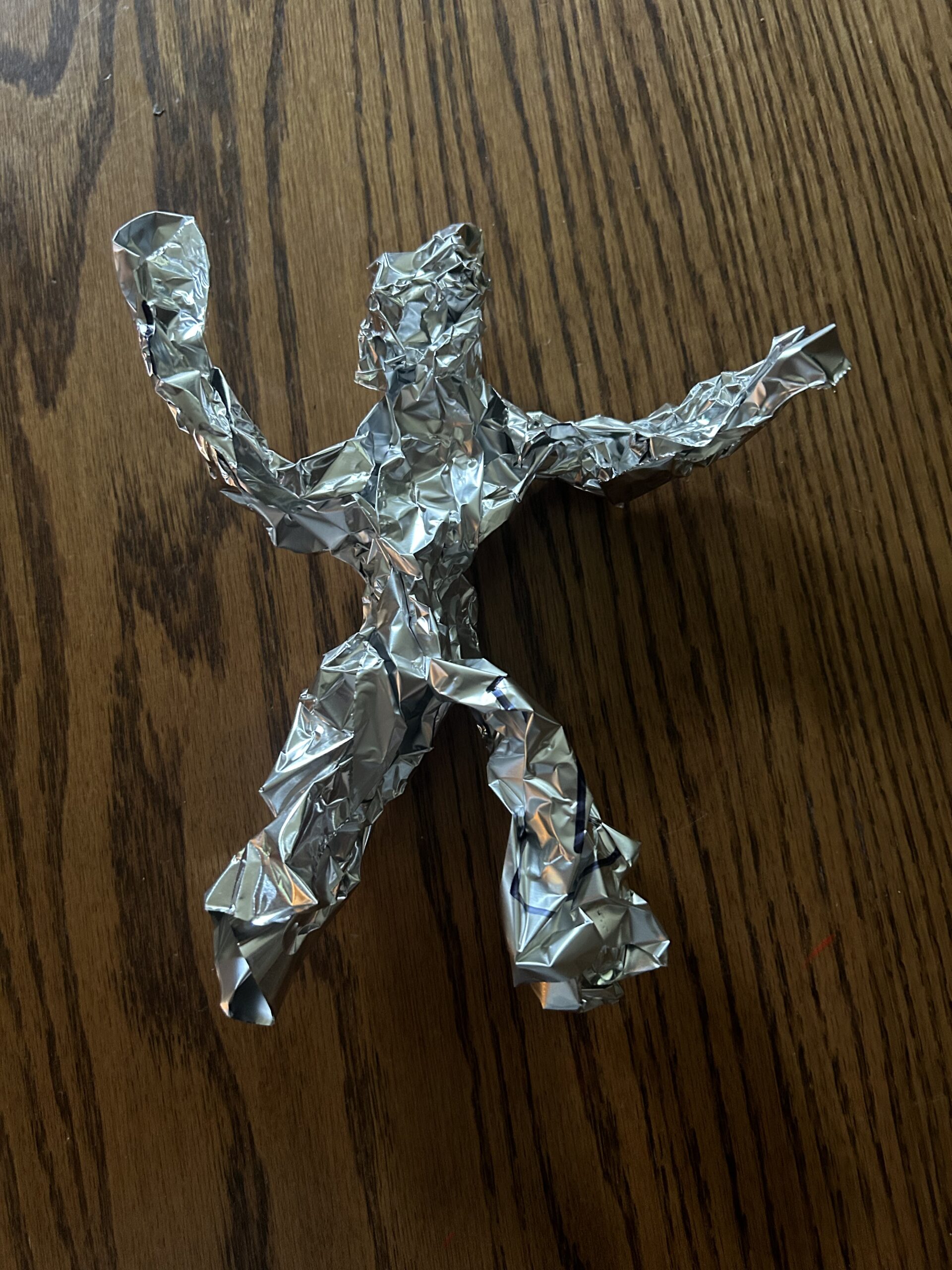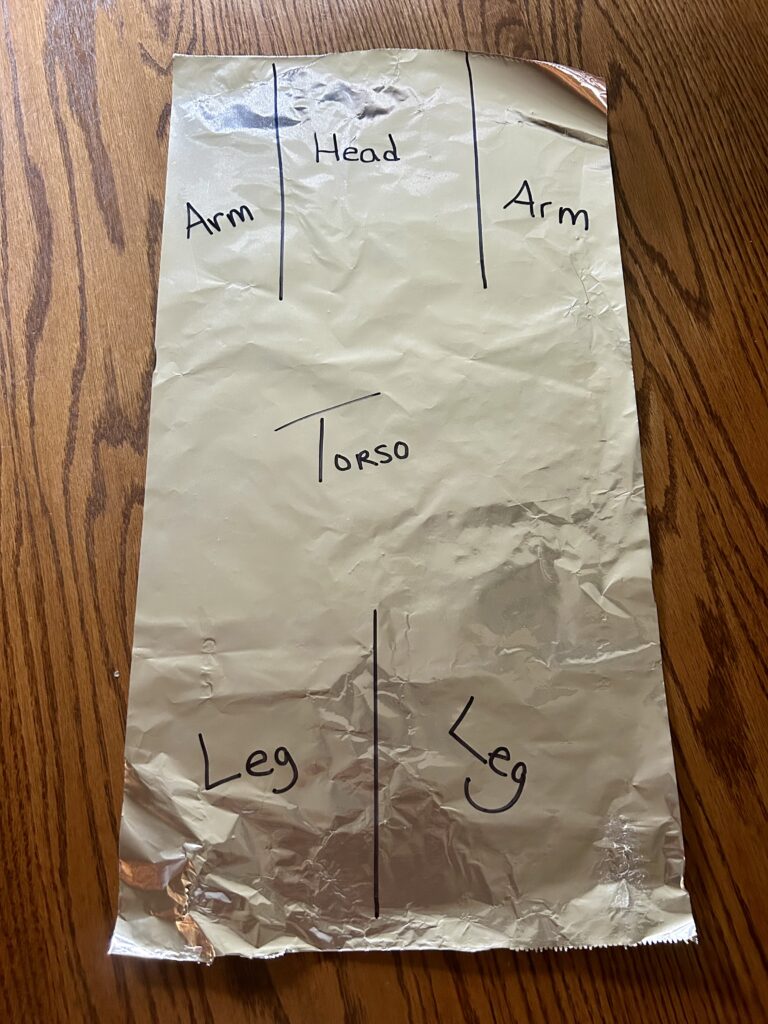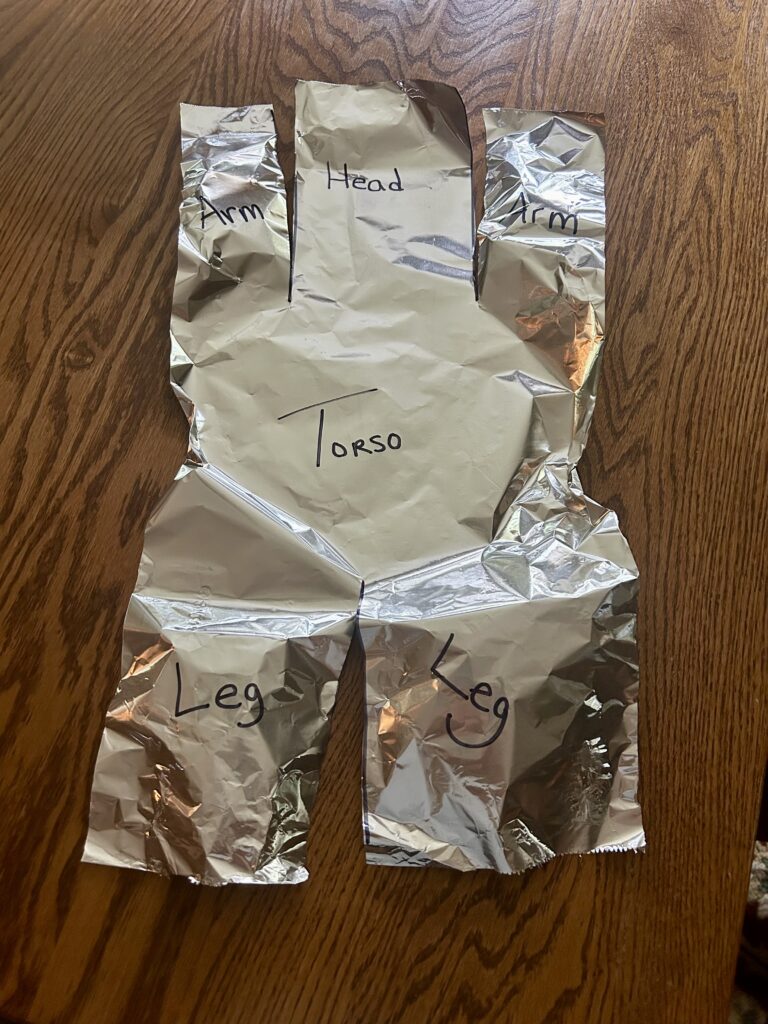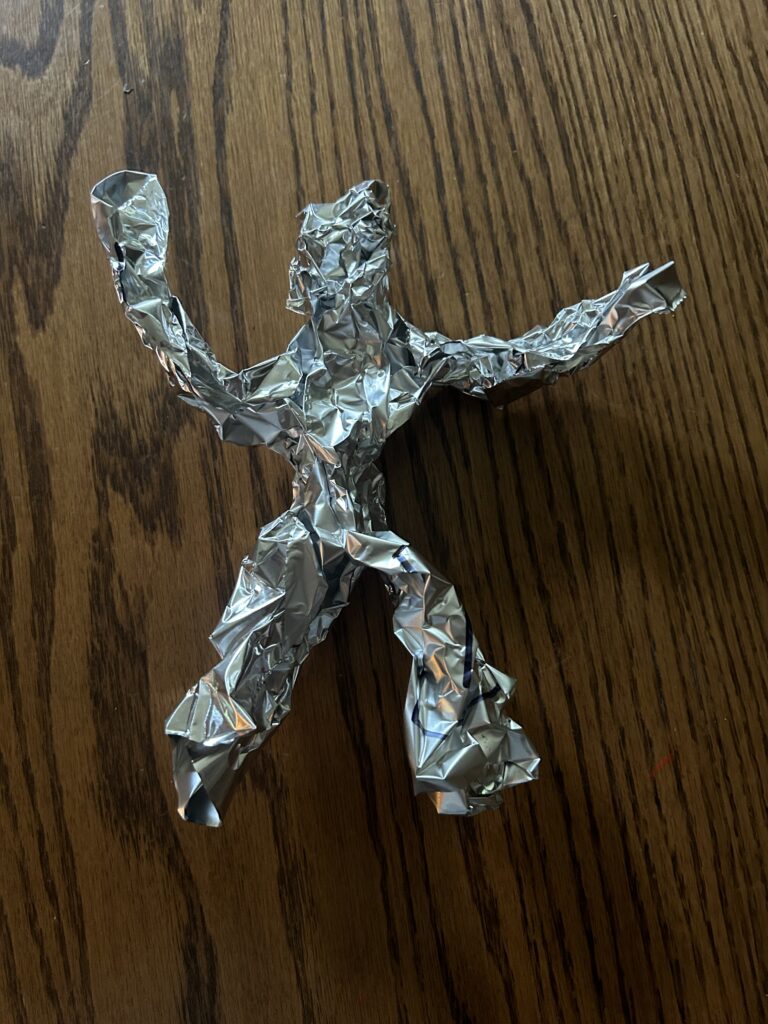
Engineering Aluminum Foil Families

"Look at my foil people!" six-year-old Mariah exclaims as she happily scrunches sheets of aluminum foil into a foil family with a giant dad, a mid-sized mom, and a tiny child.
"That's cool! says five-year-old Ali. "How'd you do that?"
"It's so easy!" Mariah declares, her eyes sparkling. "Let me show you."
Children are natural-born engineers. For them, engineering is synonymous with play. They instinctively build, make, and create, tackling engineering challenges through imaginative adventures.
As adults, we can nurture these budding skills by providing simple materials and the freedom to construct and deconstruct.
Today's aluminum foil adventure with Mariah and Ali unfolds as a journey of discovery, revealing how materials work, how they're structured, and why these concepts matter.
They're not just playing with foil; they're engaging in fundamental engineering practices!

"First, we take our foil and draw a line at the bottom," says Mariah. "See? Those are going to be the legs. Then we draw two lines at the top for the arms, and this is the head,"
Mariah points to each section with precision. "Then you just cut on those lines and scrunch the middle. The legs, arms, and head are last. Try it!”

Through this simple activity, Mariah and Ali explore early engineering concepts by building models, experimenting with new ideas, and designing structures.
As they manipulate the foil, they learn about its physical properties: how flexible it is, how it can hold a shape, and how it responds to their touch.
Aluminum foil is a forgiving material that allows children to make mistakes and revisions without frustration. If their design doesn't work as intended, the children can easily identify the issue, adjust their approach, and try again.
This fosters resilience and creative problem-solving.

The sensory and artistic qualities of aluminum foil further enhance the learning experience.
As Mariah and Ali scrunch, fold, and mold—transforming the flat foil sheets into dynamic action figures—they are building their fine motor skills and hand-eye coordination.
As they transform two-dimensional shapes into three-dimensional forms, they are also exercising their spatial reasoning abilities.
They are creating a physical model, engaging with the iterative nature of design, and experiencing the satisfaction of seeing their creative visions come to life.

Through their playful exploration, Mariah and Ali embody the spirit of the engineering design process, which consists of the following steps:
- Ask: What do we want to create?
- Imagine: What will our aluminum foil creation look like?
- Plan: How will we build our figures?
- Create: Let's make it!
- Test: Does it stand up? Can it move?
- Improve: How can we make it even better?
- Share: Look what we made!
While they may not follow this process exactly, engaging with these concepts in a fun, meaningful way lays a solid foundation for future STEAM learning.

This playful exploration also highlights the interconnectedness of the STEAM disciplines: science, technology, engineering, art, and math.
Integrating art into engineering endeavors, as Mariah and Ali have done with their foil figures, helps children understand that creativity fuels innovation in many STEM fields—especially engineering and technology.
By manipulating materials, children also gain a deeper understanding of physical properties, sensory experiences, and the potential for transformation. This exploration sparks curiosity and encourages further experimentation.
In the simple act of making aluminum foil figures, children embark on a journey of engineering discovery and cultivate a lifelong love of learning through playful exploration.

Are you ready to start a week of designing your own aluminum foil figures? Check out our Designing Foil People lesson plan to introduce your early engineers to a hands-on STEAM investigation.
Happy scrunching!